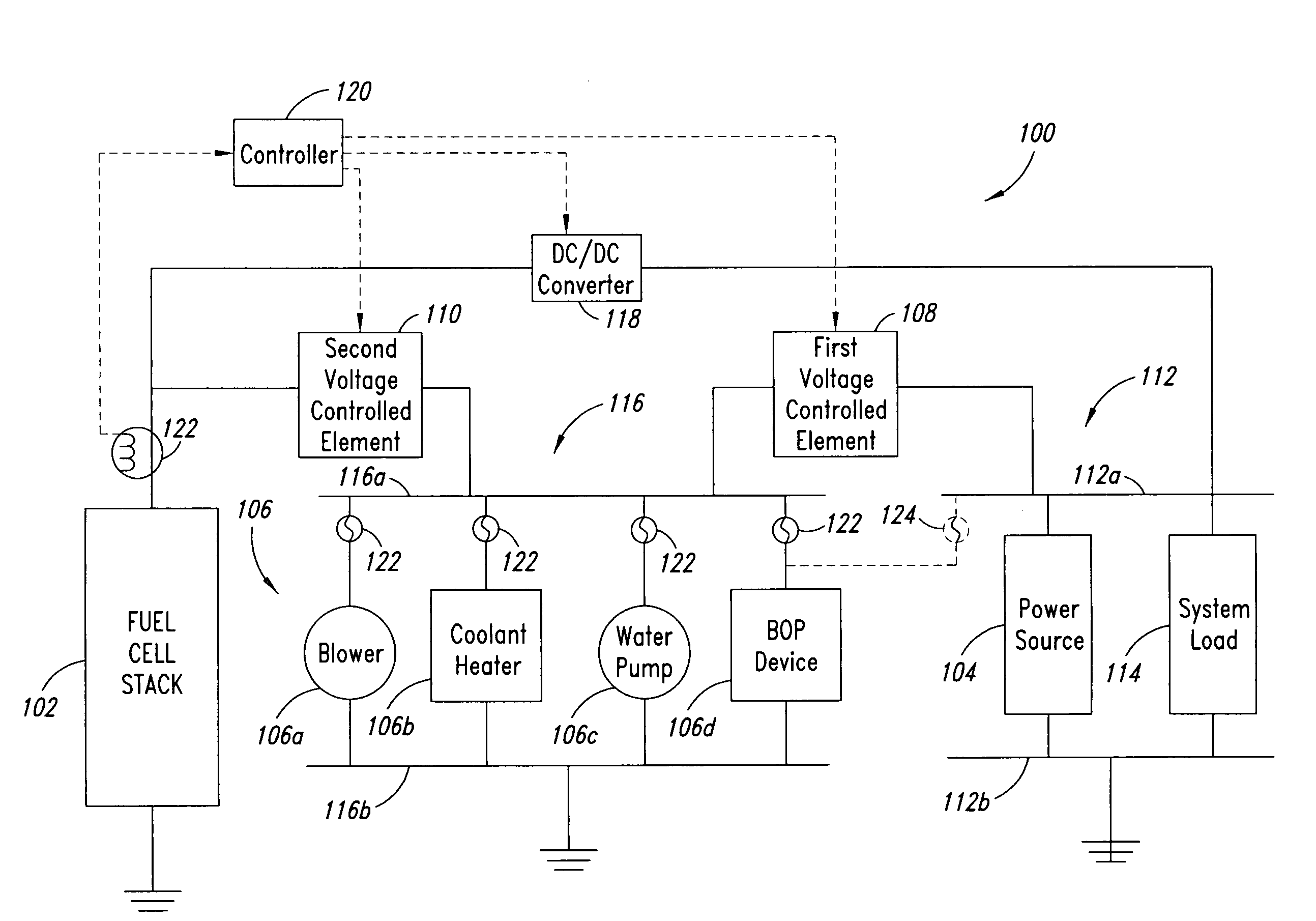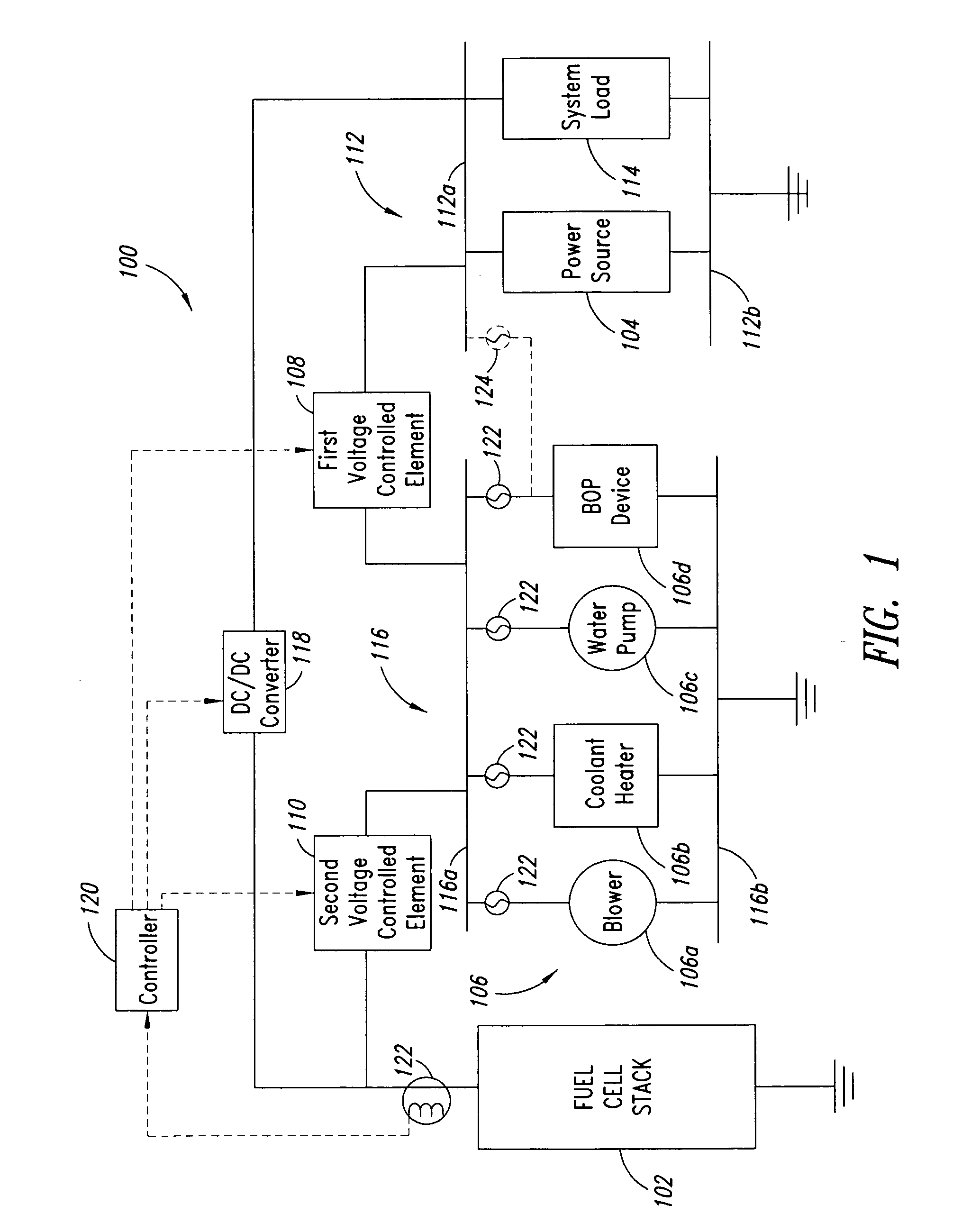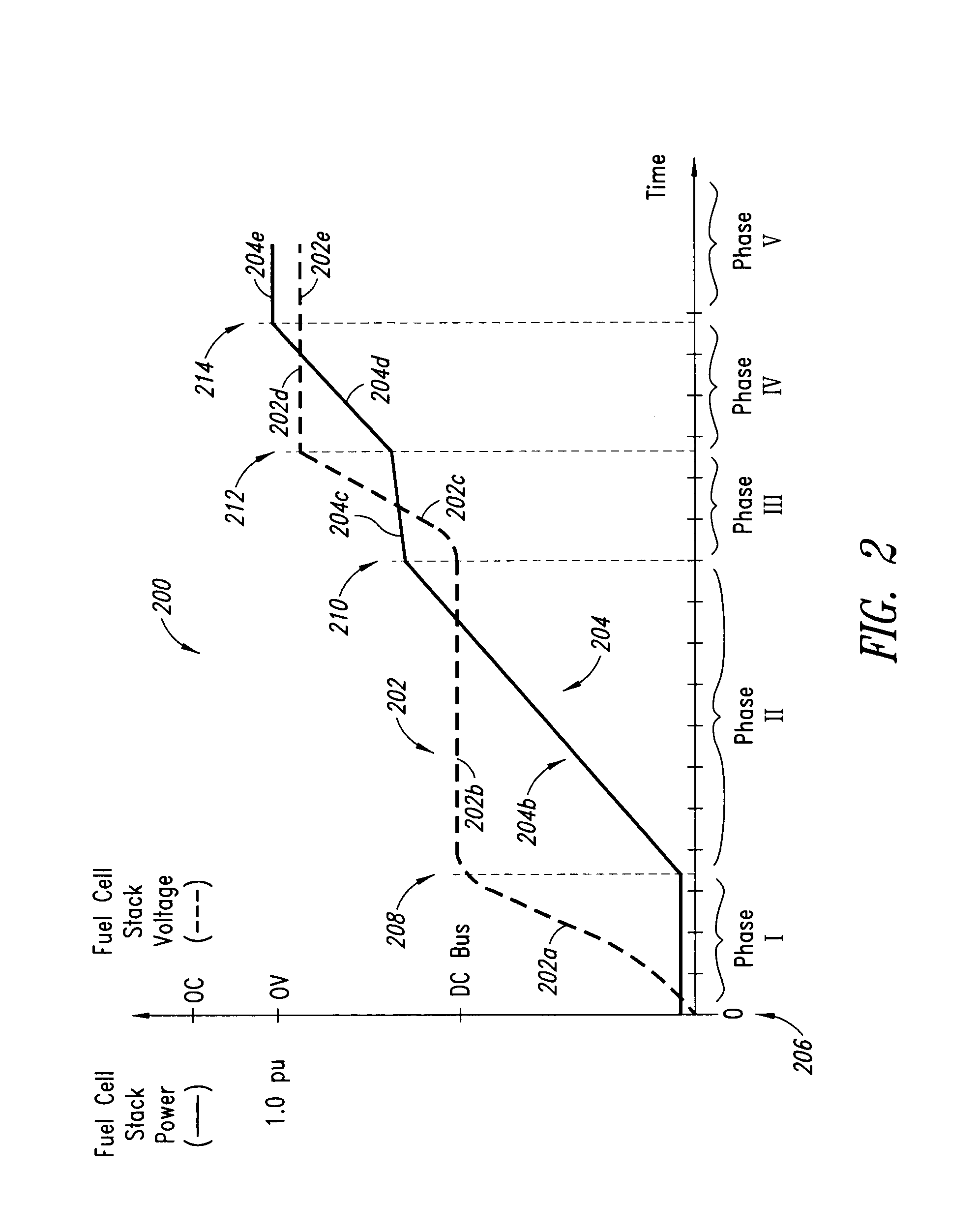Fuel cell system apparatus
a fuel cell and system apparatus technology, applied in the field of fuel cell systems, can solve the problems of undesirable operation of fuel cell stacks at their ocv, limiting the number of bop devices and/or limiting the time that the bop devices may be sourced, and the plant (bop) devices supporting the operation of fuel cell stacks are not designed for operation at the reduced voltage provided, so as to improve the voltage control of the fuel cell stack and increase the power efficiency of the fuel cell system
- Summary
- Abstract
- Description
- Claims
- Application Information
AI Technical Summary
Benefits of technology
Problems solved by technology
Method used
Image
Examples
first embodiment
[0093]FIGS. 4A-4C are schematic diagrams of alternative embodiments of the power source 104 (FIG. 1). FIG. 4A illustrates the power source 104 comprising a battery, a plurality of batteries, or a plurality of battery cells (generally denoted with reference numeral 402). Any type of suitable battery may be used, for example, a rechargeable battery.
second embodiment
[0094]FIG. 4B illustrates the power source 104 comprising a super capacitor, an ultracapacitor, a plurality of super capacitors or ultracapacitors, or super capacitor or ultracapacitor cells (generally denoted with reference numeral 404). The super capacitors 404 may be coupled to other devices, such as the exemplary diodes 408. Any type of suitable capacitor 406 may be used.
third embodiment
[0095]FIG. 4C illustrates the power source 104 comprising an alternating current (AC) system 410. The AC system 410 comprises an AC power source 412 and an alternating current to direct current (AC / DC) converter 416. The AC power source 412 may be any suitable AC machine that is operable in a power generation mode. For example, the AC power source 412 may be mechanically coupled to a fossil fuel burning engine or the like. As another example, the AC power source 412 may be coupled to a wheel or axle of a vehicle and used to propel the vehicle when operated as a motor, and used as a brake to slow or stop the vehicle. When operated as a brake, the AC power source 412 may operate as a generator that converts the kinetic energy of the slowing or stopping vehicle into electrical power. Any type of suitable AC power source 412 may be used.
[0096]The AC / DC converter 414 converts AC power received from the AC power source 412 into DC power. The DC power is then transferred onto the first DC ...
PUM
 Login to View More
Login to View More Abstract
Description
Claims
Application Information
 Login to View More
Login to View More - R&D
- Intellectual Property
- Life Sciences
- Materials
- Tech Scout
- Unparalleled Data Quality
- Higher Quality Content
- 60% Fewer Hallucinations
Browse by: Latest US Patents, China's latest patents, Technical Efficacy Thesaurus, Application Domain, Technology Topic, Popular Technical Reports.
© 2025 PatSnap. All rights reserved.Legal|Privacy policy|Modern Slavery Act Transparency Statement|Sitemap|About US| Contact US: help@patsnap.com



